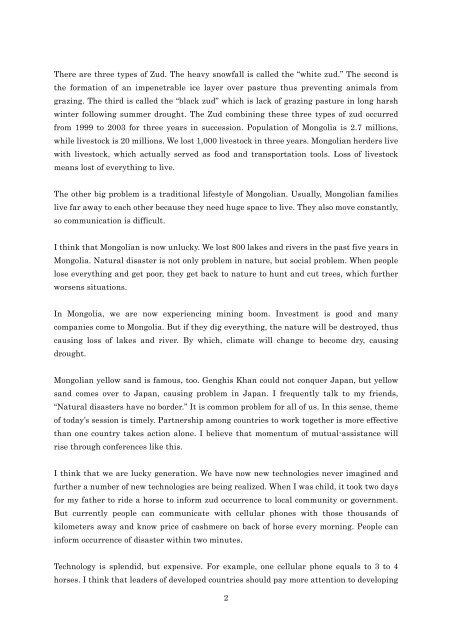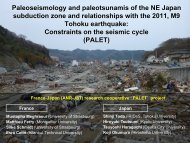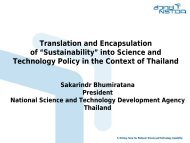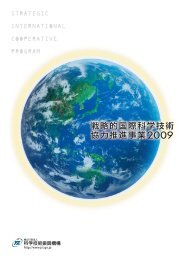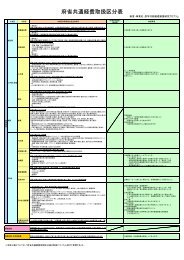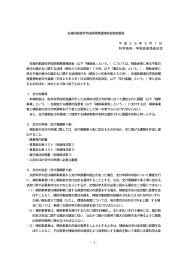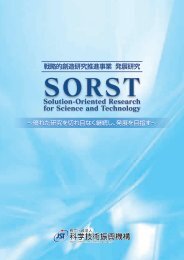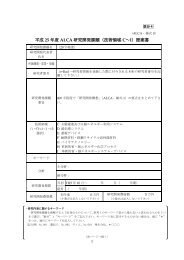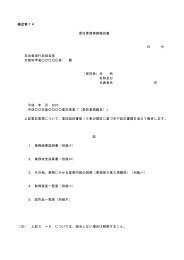Zud Natural Disaster, Prevention and Recovery:Elbegdorj Tsakhia ...
Zud Natural Disaster, Prevention and Recovery:Elbegdorj Tsakhia ...
Zud Natural Disaster, Prevention and Recovery:Elbegdorj Tsakhia ...
Create successful ePaper yourself
Turn your PDF publications into a flip-book with our unique Google optimized e-Paper software.
There are three types of <strong>Zud</strong>. The heavy snowfall is called the “white zud.” The second is<br />
the formation of an impenetrable ice layer over pasture thus preventing animals from<br />
grazing. The third is called the “black zud” which is lack of grazing pasture in long harsh<br />
winter following summer drought. The <strong>Zud</strong> combining these three types of zud occurred<br />
from 1999 to 2003 for three years in succession. Population of Mongolia is 2.7 millions,<br />
while livestock is 20 millions. We lost 1,000 livestock in three years. Mongolian herders live<br />
with livestock, which actually served as food <strong>and</strong> transportation tools. Loss of livestock<br />
means lost of everything to live.<br />
The other big problem is a traditional lifestyle of Mongolian. Usually, Mongolian families<br />
live far away to each other because they need huge space to live. They also move constantly,<br />
so communication is difficult.<br />
I think that Mongolian is now unlucky. We lost 800 lakes <strong>and</strong> rivers in the past five years in<br />
Mongolia. <strong>Natural</strong> disaster is not only problem in nature, but social problem. When people<br />
lose everything <strong>and</strong> get poor, they get back to nature to hunt <strong>and</strong> cut trees, which further<br />
worsens situations.<br />
In Mongolia, we are now experiencing mining boom. Investment is good <strong>and</strong> many<br />
companies come to Mongolia. But if they dig everything, the nature will be destroyed, thus<br />
causing loss of lakes <strong>and</strong> river. By which, climate will change to become dry, causing<br />
drought.<br />
Mongolian yellow s<strong>and</strong> is famous, too. Genghis Khan could not conquer Japan, but yellow<br />
s<strong>and</strong> comes over to Japan, causing problem in Japan. I frequently talk to my friends,<br />
“<strong>Natural</strong> disasters have no border.” It is common problem for all of us. In this sense, theme<br />
of today’s session is timely. Partnership among countries to work together is more effective<br />
than one country takes action alone. I believe that momentum of mutual-assistance will<br />
rise through conferences like this.<br />
I think that we are lucky generation. We have now new technologies never imagined <strong>and</strong><br />
further a number of new technologies are being realized. When I was child, it took two days<br />
for my father to ride a horse to inform zud occurrence to local community or government.<br />
But currently people can communicate with cellular phones with those thous<strong>and</strong>s of<br />
kilometers away <strong>and</strong> know price of cashmere on back of horse every morning. People can<br />
inform occurrence of disaster within two minutes.<br />
Technology is splendid, but expensive. For example, one cellular phone equals to 3 to 4<br />
horses. I think that leaders of developed countries should pay more attention to developing<br />
2


